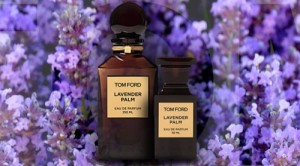31 Rue Cambon is named after Coco Chanel’s apartment above Chanel’s long-time headquarters at the same address, and was introduced to the world in 2007 as part of Chanel’s six-line prestige collection called “Les Exclusifs.”
The fragrance was created by Chanel’s house perfumer, Jacques Polge, and is supposed to reflect Chanel’s personal taste for the classically simple but, also, the baroque. According to Chanel’s own description, 31 Rue Cambon was
[t]he epicenter of the world of Gabrielle Chanel, a place that harmoniously combined her need for simplicity with her taste for the baroque. It took the complex form of a beautiful Chypre fragrance to capture these contrasting passions, also present in Haute Couture, in a scent. This exceptional fragrance combines the mysteries of both sensuality and elegance.
The categorization of the perfume as a “chypre” raised a lot of debate and discussion when this perfume was first released back in 2007. A chypre is almost invariably something that has oakmoss as its core foundational element; and there is absolutely none here. In fact, the century-plus era of the famous “chypre” family of perfumes being one of the most significant and influential is now over, thanks to the EU and IFRA. (I will spare you one of my rants on that subject but, if you want to read more about what a chypre is supposed to be, feel free to use the Glossary linked at the very top of the page.)
Though Chanel’s description references chypres, Now Smell This states that Jacques Polge himself describes the perfume as an “oakmoss-free chypre.” Whatever the oakmoss issue, in an interesting turn of events, Chanel itself does not classify the scent as a “chypre” at all. Instead, on its page listing all the Exclusifs, it categorizes 31 Rue Cambon as a “Smooth Woody Floral.” That’s just as well, because the description sums up 31 Rue Cambon perfectly, in my opinion.
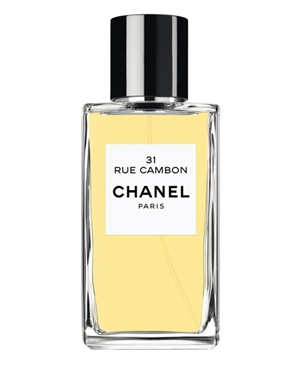 Chanel offers no notes for the fragrance on its website but, Now Smell This says that the notes are said to include “bergamot, iris, jasmine, patchouli and labdanum.” Personally, I am tempted to agree with the commentator, “cylob“, on Fragrantica, who believes that the full list of notes are as follows:
Chanel offers no notes for the fragrance on its website but, Now Smell This says that the notes are said to include “bergamot, iris, jasmine, patchouli and labdanum.” Personally, I am tempted to agree with the commentator, “cylob“, on Fragrantica, who believes that the full list of notes are as follows:
pepper, bergamot, orris, narcissus, jasmine, patchouli, ambrette, vetiver, labdanum.
31 Rue Cambon opens on my skin with bergamot and aldehydes. The bergamot reads here as a citrusy lemon and not like Earl Grey tea (as it sometimes does). The aldehydes, to my huge relief, are not waxy and extremely soapy but, rather, light and incredibly fizzy. Moments later, there is the subtle breath of jasmine, light and airy, never indolic, heady or narcotic. When combined with the aldehydes, they really fizz in a way that reminds me, with a smile, of YSL‘s Champane/Yvresse. Here, there is a definite feeling of sparkling champagne, only it’s lemon and jasmine in an effervescent accord. There is a subtly powdery note of iris from the orris and, then, vetiver.
The vetiver is very interesting in this opening stage. It’s fresh, green and more akin to lemon grass than to anything dark, earthy or rooty. Its freshness undercuts any chance that the jasmine could be indolic and adds to that overall impression of bright, green Spring colours, flecked with dollops of bright yellow and white.
 The colour image of yellow is enhanced by a sense of narcissus hiding behind the other notes, combined with something that very much feels like the bright cheeriness of daffodil (which is often another name for daffodils). The whole thing is very light and sheer, a gauzy veil of floral notes dominated primarily by lemon and fizzy aldehydes, but the feeling of both the yellow colour and of narcissus is there.
The colour image of yellow is enhanced by a sense of narcissus hiding behind the other notes, combined with something that very much feels like the bright cheeriness of daffodil (which is often another name for daffodils). The whole thing is very light and sheer, a gauzy veil of floral notes dominated primarily by lemon and fizzy aldehydes, but the feeling of both the yellow colour and of narcissus is there.
 Thirty minutes in, the perfume has subtly changed, almost like light shining on a different part of a crystal chandelier and reflecting different facets. The aldehydes and lemony bergamot are joined by a much stronger note of iris, a touch of a pepper, and a suddenly earthier, woodier vetiver whose rootier characteristic has started to emerge. The iris adds some soft powder, but it’s light and far from the sort of powder you find in Guerlain’s signature Guerlainade. Any fear of powderiness is undercut by the dryness of the quiet pepper note. Like the iris, the jasmine is also much stronger now, though still light in texture and still far from indolic. Also emerging for the first time is the ambrette; it’s a flowering shrub that is sometimes called Musk Mallow and whose parts are often used to replicate the scent of (animal) musk. Here, like the rest of the perfume, its musky touch is light, soft and gauzy.
Thirty minutes in, the perfume has subtly changed, almost like light shining on a different part of a crystal chandelier and reflecting different facets. The aldehydes and lemony bergamot are joined by a much stronger note of iris, a touch of a pepper, and a suddenly earthier, woodier vetiver whose rootier characteristic has started to emerge. The iris adds some soft powder, but it’s light and far from the sort of powder you find in Guerlain’s signature Guerlainade. Any fear of powderiness is undercut by the dryness of the quiet pepper note. Like the iris, the jasmine is also much stronger now, though still light in texture and still far from indolic. Also emerging for the first time is the ambrette; it’s a flowering shrub that is sometimes called Musk Mallow and whose parts are often used to replicate the scent of (animal) musk. Here, like the rest of the perfume, its musky touch is light, soft and gauzy.
An hour in, the oddest thing happens. The perfume seems to vanish entirely. I was in disbelief, sniffing my arm like a hyena attacking the first food he’s seen in days. Nothing. Gone. 31 Rue Cambon is often bemoaned for its longevity issues, and it’s certainly not the most enduring in the line, but this seemed to be taking things a step too far. Then, suddenly, there was a hint of fragrance: musky, faintly woody floral notes that were too soft and mild to be more than just a vague hint of something. Then, it vanished again.
At the second hour mark, lo’ and behold, like a Jack in the Box, it popped back up! And not only did it suddenly re-appear but it seemed stronger than it had been before. Strong jasmine and sweetness, accompanied by light powder, green notes and vetiver. I can’t account for it. There are ghostly notes, but an entirely ghostly perfume?! It was the strangest thing, but there is no denying that 31 Rue Cambon decided to leave, return, leave and then reappear to stay quite a few times during the time I tested it. I have to wonder if its mercurial nature is why so many people think the perfume has incredibly short longevity. Maybe they’re not sniffing their arm at the right time when it decides to join the party, so they missed its prima donna return?
Whatever the reason, I have to say that I liked 31 Rue Cambon a lot more than I had expected to. All the oft-told stories about how it barely shows up, the low sillage, and the extremely brief longevity issues — not to mention the whole muddy mess involving chypres/non-chypres/modern-take-on-chypres — had left me frowning a little and anticipating a scent that would be problematic. To my surprise, 31 Rue Cambon was very good. And I attribute most of that to the dry-down because it’s absolutely lovely.
In its middle to final stages, the perfume becomes a soft veil of sweetness and green notes. At first, about four hours in, it is soft patchouli, musk, earthy (but light) vetiver, and an amorphous, generalized “floral” accord. The patchouli note is far from the 1970s dark, dirty, hippie patchouli (which I actually quite adore); it’s just a faint whisper that adds a touch of sweetness to the vetiver. The latter is also just the merest breath of depth and earthiness. Actually, sometimes, the perfume just evokes some sort of “green” note without even seeming like vetiver.
Later, about eight hours in, the perfume simply becomes light amber with just a dab of labdanum. It’s a sweet, almost honeyed scent that is not opaque, thick or resinous. I adore labdanum and the depth it adds to ambery elements. Here, it’s too light to have serious body of its own, but it adds a perfect amount of depth to the amber to stop it from being totally translucent and faint. The whole thing feels a little like being in candlelight or in the soft warmth of afternoon sunlight.
Those final hours are quite a sharp juxtaposition to the fizzy, bright opening notes filled with citrus, aldehydes, iris and jasmine. I wouldn’t say the perfume has turned “baroque” — to use one of the descriptive adjectives applied by Chanel to 31 Rue Cambon — because it’s far too gauzy in texture. No, I think 31 Rue Cambon is best described as a mercurial woman who is lightheartedly playful and teasing in the sharp brightness of the morning, and slightly more weighty, sensuous and serious in the warmer, golden light of the late afternoon.
31 Rue Cambon is not to my personal taste and style, and I would never wear it, but it surprised me. In a good way. I think that, if people go into it without any expectation of a “chypre” and just approach it with an open mind, they too may be surprised. It’s a very Chanel scent and oozes that house’s classique, elegant signature. It’s neither revolutionary nor earth-shatteringly unique — but it wasn’t trying to be. That’s simply not Chanel. But it’s very, very good.
The only significant problem with 31 Rue Cambon seems to be its longevity issues. On average, it seems to last most people around four hours. Some have said significantly less, with one commentator on Fragrantica saying it lasted a mere 30 minutes! If I hadn’t persisted and kept on smelling my arm, I would have given it an hour. Yet, to my disbelief, I could smell lingering traces of the labdanum at the 9 hour mark! And you know how my body consumes perfume! So, I have to wonder if a miniscule fraction of those people simply didn’t realise that the perfume was still on them, except it was like a teasing ghost that completely vanishes only to flit back on the scene, then to repeat that annoying act a few more times? Not all, but perhaps for a handful?
Either way, longevity is a definite issue, even if you’re not continually sniffing your arm to detect all of 31 Rue Cambon. The problem might be solved if the fragrance came in the stronger eau de parfum concentration; alas, it is available only in the significantly lighter eau de toilette formulation.
Nonetheless, it’s still a scent worth trying. At the very least, it will let you know what all the swooning is about, because this is one very hyped, much adored fragrance. In Perfumes: The A-Z Guide by the perfume critics, Luca Turin and Tania Sanchez, Ms. Sanchez writes a veritable ode to 31 Rue Cambon, awarding it 5 stars and raving orgasmically that “I cannot remember the last time, if ever, a perfume gave me such an instantaneous impression of ravishing beauty at first sniff.” In fact, she states, point-blank, that it is “one of the ten greats of all time, and precious proof that perfumery is not dead.”
I think all that goes too, too far. 31 Rue Cambon is good, but it’s not that good! It’s a beautiful scent which floral, aldehydes lovers will love in the opening, and which Orientalists will love in the closing, but it’s really not a particularly breath-taking perfume of ravishing beauty. It’s just a very typical Chanel that exudes elegance.
By the same token, I also don’t agree with Robin at Now Smell This who thinks this is “the best” of the Exclusifs. Out of those that I’ve smelled thus far, I would grant that title to Coromandel. (My review for that is here.) Perhaps that’s because I’m more of an Orientalist than she seems to be. If I weren’t, then maybe I would prefer 31 Rue Cambon.
Since I’m being contrary, I’ll go to the opposite side of things and add that I absolutely disagree with those few Fragrantica commentators who think that 31 Rue Cambon is a scent suited only to a very old, rich woman. To quote one assessment, written by “shabbus”:
This smells of wealth, but also of age. If you were sitting in the lobby of the Breakers Hotel in Palm Beach and a wealthy dowager entered and sat down next to you while her driver checked her in and made sure her bags were handled by the bellman, her Hermes scarf would smell of 31 Rue Cambon. And so would the Pomeranian on her lap.
No. Absolutely not, in my opinion. For some reason, the 31 Rue Cambon woman reminds me of Holly Golightly in Breakfast at Tiffany’s. Insouciant, breezy, mercurial, unreliable, fizzy, ditzy, but always elegant and feminine, and with the capacity to be slightly more warm, stable and serious at the end. Or perhaps it would be more like this playful side of a retro-looking Jennifer Garner in Chanel in a photo shoot taken in 2009:
If I were to agree with anyone, it would be with the assessment at I Smell Therefore I Am whose review really encapsulated the overall feel and visuals of the scent:
For me, 31 Rue Cambon sits somewhere between the floral vanilla of Allure and the deep golden hues of Mitsouko. It’s a bright fragrance, so shimmering at first, and really for a while, that it was hard for me to classify in any useful way. Where Mitsouko is somewhat like sunshine through a pane of amber glass, 31 Rue Cambon is like sunlight hitting the beige upholstery of a sublimely cosy couch. It’s well blended, and more than anything it simply smells like “Chanel” to me.
I think 31 Rue Cambon is the perfect scent for a woman wanting an elegant, discreet, soft woody floral with a slightly opulent edge of sensuality. Its soft elegance makes it never out-of-place — whether you’re at the office or on a date. In fact, its low sillage also makes it an ideal perfume for the office.
In a way, the development of 31 Rue Cambon actually feels a bit like a day at the office. Its restrained elegance and fizzy, bright opening evoke the feel of a bright Spring morning, as you go to work wearing a feminine but perfectly tailored and structured Chanel suit with a crisp white shirt underneath. Its surprising ambered warmth and softly seductive edge during its lovely final period is really akin to what happens, hours later, when a woman prepares to leave the office to join friends for drinks by letting down her hair and opening a few buttons of her shirt to reveal just the faintest suggestion of cleavage.
It’s very elegant, it’s very discreet, it’s very Chanel and, for some women, it may be “ravishing beauty at first sniff.”

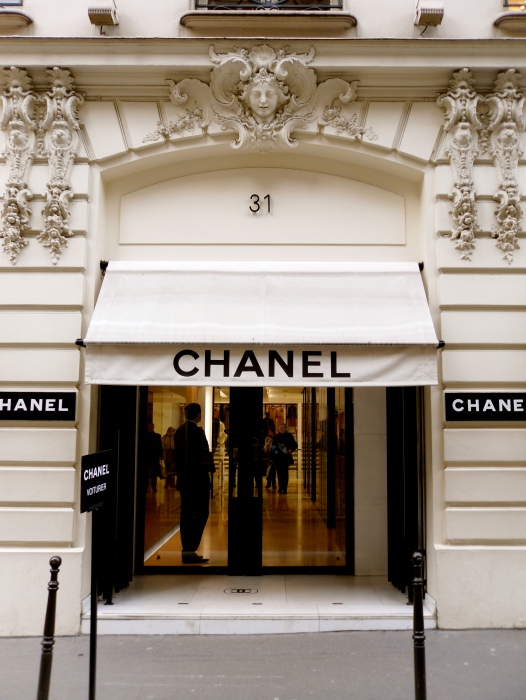




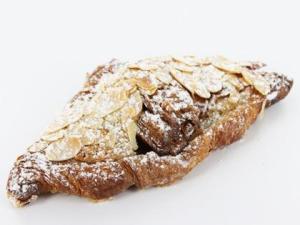
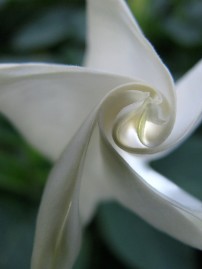

 animalic notes. There is leather, incense, musk and boozy amber, but still under the umbrella of Cherry Coke. Or perhaps it’s closer to root beer now? I can’t get the impression of an 1950s soda fountain out of my head. The perfume is — like all Bertrand Duchaufour creations, superbly well-blended — so different notes only occasionally rise to the foreground but there is no getting away from that initial soda impression. On me, the leather notes are very subtle; the incense and musk are far more predominant. During the final stage, Mon Numero 10 becomes quite lovely: incensed rose with amber that is just barely boozy but always rich. It’s like a sheer veil just touching my skin.
animalic notes. There is leather, incense, musk and boozy amber, but still under the umbrella of Cherry Coke. Or perhaps it’s closer to root beer now? I can’t get the impression of an 1950s soda fountain out of my head. The perfume is — like all Bertrand Duchaufour creations, superbly well-blended — so different notes only occasionally rise to the foreground but there is no getting away from that initial soda impression. On me, the leather notes are very subtle; the incense and musk are far more predominant. During the final stage, Mon Numero 10 becomes quite lovely: incensed rose with amber that is just barely boozy but always rich. It’s like a sheer veil just touching my skin.